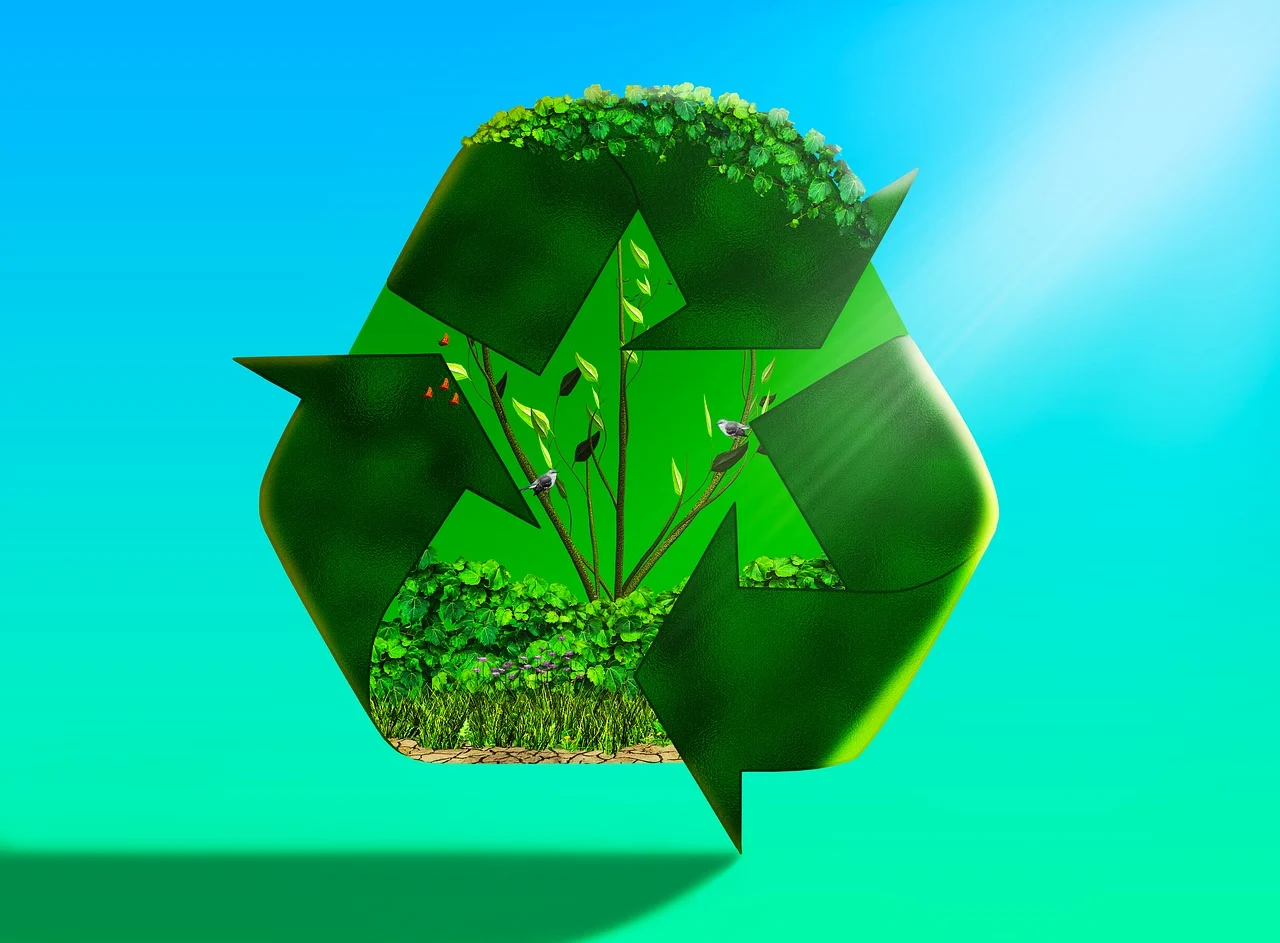As the world grapples with growing environmental challenges, the concept of a “zero-waste” future is gaining significant momentum. This ambitious vision envisions a world where resources are maximized, waste is minimized, and the traditional linear economy—take, make, dispose—is replaced by a circular approach. The shift towards zero waste is not just a dream; it is becoming a reality through cutting-edge innovations in infrastructure, waste management, and sustainable design.
In this article, Andrea Lockerbie takes a deep dive into some of the most exciting and impactful innovations that are transforming how we manage resources and envision a future beyond waste.
1. The Circular Economy: From Waste to Resource
At the heart of the zero-waste movement lies the circular economy. Unlike the traditional linear economy, where products are discarded at the end of their life cycle, the circular economy focuses on reusing, recycling, and reimagining waste as a valuable resource. Rather than disposing of products after use, the goal is to close the loop and create systems where materials flow in a continuous cycle, reducing the need for raw materials and preventing waste from accumulating in landfills or the natural environment.
This transformative shift is driving the development of new technologies, policies, and business models designed to keep products in use for as long as possible.
2. Waste-to-Energy: Harnessing the Power of Waste
One of the most significant innovations in waste management is waste-to-energy (WTE) technology. WTE facilities convert non-recyclable waste into electricity, heat, or fuel through processes such as incineration, gasification, and pyrolysis. These systems are increasingly sophisticated and are helping to address two critical global challenges: waste disposal and energy production.
For example, in countries like Sweden, where waste-to-energy plants are a common part of the infrastructure, waste that cannot be recycled is turned into energy that powers homes and industries. The country has even reached a point where it imports waste from other nations to fuel its plants, showcasing the potential for waste to become a valuable resource rather than a burden.
Moreover, advancements in gasification technologies, which convert organic waste into syngas, a cleaner energy source, are helping to reduce the environmental impact of traditional waste disposal methods, such as landfilling and open burning.
3. Advanced Recycling Technologies: Closing the Loop on Plastics
Plastic waste is one of the most challenging environmental issues today. However, innovations in recycling technologies are offering new hope for turning waste plastics into valuable products. Chemical recycling, in particular, is gaining traction as a way to recycle plastics that are difficult or impossible to process using conventional methods.
Unlike mechanical recycling, which often results in a loss of quality after multiple cycles, chemical recycling breaks down plastics into their original chemical components, allowing for a closed-loop system where plastic can be recycled infinitely. Companies like Loop Industries are pioneering technologies that can turn waste plastics into virgin-quality plastic, which can be used to manufacture new products, including packaging, textiles, and even automotive parts.
This approach has the potential to dramatically reduce the amount of plastic waste that ends up in landfills and oceans, while also creating new markets for recycled materials.
4. Urban Mining: Extracting Value from E-Waste
As the world becomes increasingly digital, electronic waste (e-waste) is growing at an alarming rate. E-waste includes discarded electronics such as smartphones, computers, and televisions, which contain valuable metals like gold, silver, and copper. However, recycling these materials in traditional waste management systems can be inefficient and harmful to the environment.
Urban mining is an innovative solution that extracts valuable materials from e-waste through advanced techniques such as hydrometallurgical processing or biotechnology. Companies like Boliden and Umicore are leading the charge in using these methods to recover precious metals from old electronics. This reduces the need for traditional mining, which can be destructive to ecosystems and contribute to environmental degradation.
By mining the waste already in urban centers, we can reduce the environmental footprint of mining operations and close the loop on the lifecycle of electronics.
5. Biodegradable Alternatives: Replacing Single-Use Plastics
The development of biodegradable alternatives to single-use plastics is another key innovation in the pursuit of a zero-waste future. Materials such as bioplastics, made from renewable resources like corn or sugarcane, are increasingly being used to replace conventional plastic products, particularly in packaging.
Bioplastics are designed to break down more quickly in the environment than petroleum-based plastics, reducing the risk of long-term pollution in landfills and oceans. Additionally, compostable materials are gaining popularity as packaging options for food products, offering a more sustainable alternative to traditional plastic wraps and containers.
Companies like Danone, Nestlé, and Unilever are working to integrate biodegradable packaging into their product lines, pushing for the phasing out of single-use plastics in favor of more sustainable alternatives.
6. Smart Waste Management Systems: The Role of IoT and AI
The integration of Internet of Things (IoT) sensors and artificial intelligence (AI) into waste management is revolutionizing the efficiency and effectiveness of recycling systems. Smart bins embedded with IoT sensors can track waste levels in real-time, allowing municipalities to optimize collection schedules and routes to reduce fuel consumption and lower carbon emissions.
In addition, AI-powered robots are being deployed in recycling facilities to automate the sorting process. These robots can accurately identify and separate materials, ensuring that recyclable materials are efficiently processed while reducing contamination in the recycling stream.
For example, companies like AMP Robotics are using AI and robotics to improve the sorting of recyclables, significantly enhancing the efficiency of recycling plants and helping to divert more waste from landfills.
7. Circular Design: Rethinking Product Life Cycles
Another fundamental aspect of achieving a zero-waste future lies in circular design—the process of designing products from the outset to minimize waste and maximize the reuse of materials. This includes using sustainable materials, designing products that can be easily disassembled, and creating systems that ensure end-of-life products can be recycled or repurposed.
For instance, Fairphone, a smartphone manufacturer, has adopted a modular design that allows consumers to repair and replace individual parts of their phones, thereby extending their lifespan and reducing e-waste. Similarly, brands like Patagonia and IKEA are embracing circular principles, using recycled materials in their products and offering take-back schemes for used items.
8. The Path Forward: Collaboration and Innovation
While these innovations offer promising solutions, achieving a truly zero-waste world will require global collaboration. Governments, businesses, and individuals must all play a role in adopting circular economy principles, implementing sustainable practices, and pushing for policies that support waste reduction and resource conservation.
International frameworks, such as the United Nations Sustainable Development Goals (SDGs), provide a roadmap for a more sustainable future, but much work remains to be done. Through continued innovation, investment in sustainable infrastructure, and a commitment to collaborative action, we can pave the way for a world where waste is a thing of the past.
Conclusion
As we look toward the future, the innovations highlighted above represent just a small fraction of the incredible progress being made in the fight against waste. From waste-to-energy technologies and advanced recycling systems to the rise of smart waste management and circular design, these advancements are offering new possibilities for a cleaner, more sustainable world. The path to a zero-waste future will not be easy, but with continued investment in technology, infrastructure, and collaboration, it is undoubtedly within reach.
References:

